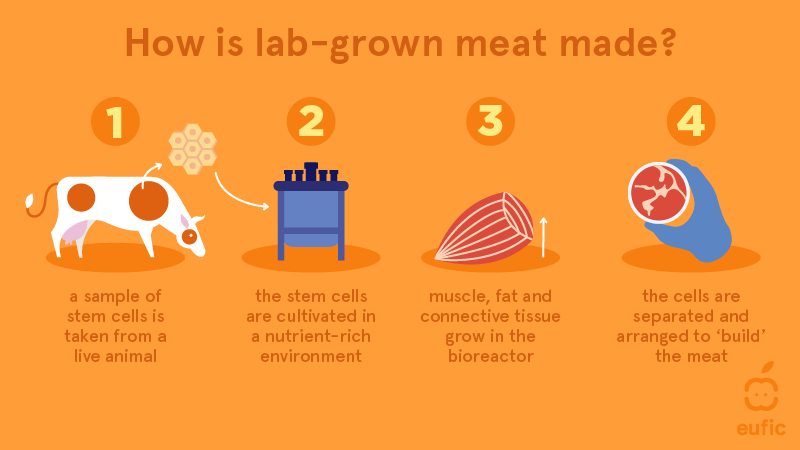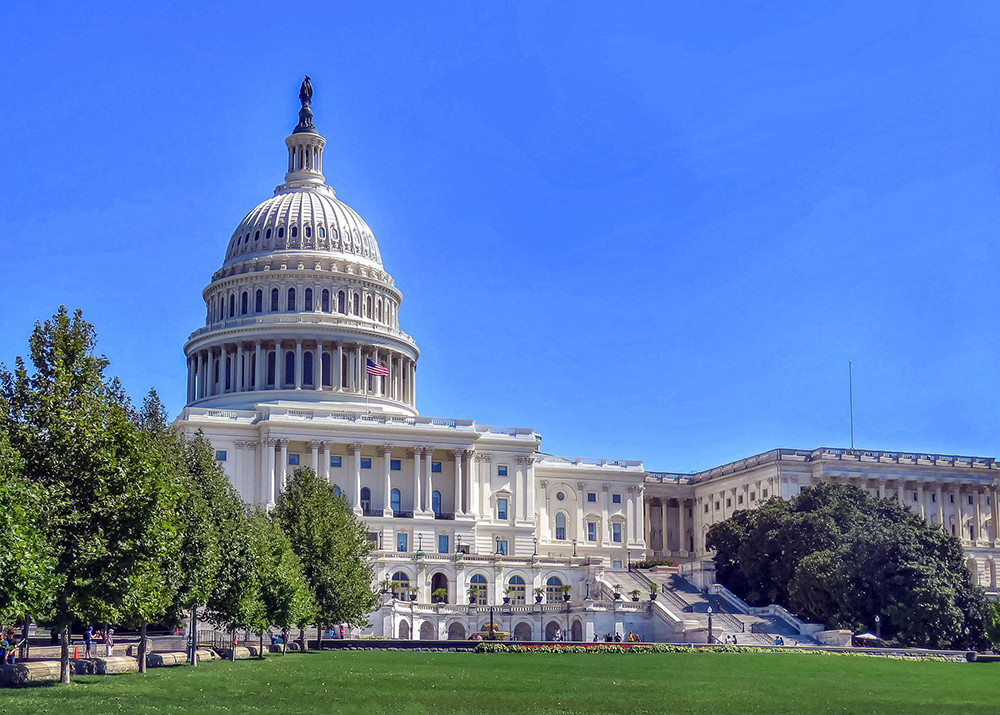The U.S. Department of Agriculture (USDA) announced the historic approval of the sale of chicken meat made from cultivated cells, which could provide a sustainable solution for food security.
What is lab-cultivated meat?
This is meat produced through the cultivation of animal cells in steel tanks. The cells are taken from stem, muscle, and fat cells. Stem cells are cultured in bioreactors with nutrient-rich media to multiply. The cells then differentiate into muscle, fat, and connective tissue. Using edible scaffolding, the cells are arranged into desired shapes like steaks or burgers, aiding their development and nutrient distribution.

While it’s commonly referred to as cultivated meat, it is also known as cultured meat, lab-grown meat, or cell-based meat.
Across the globe, over 150 companies are dedicated to developing these innovative food products. Their efforts encompass a diverse range of meats, including chicken, beef, pork, and lamb.
But only two have been approved by the USDA: GOOD Meat Inc. and Upside Foods. Both companies produce cultivated chicken.
What are GOOD Meat and Upside Foods?
Upside Foods was founded in 2015, and GOOD Meat was founded in 2016.
GOOD Meat’s cultivated chicken has been approved in Singapore since 2020. The company explains:
“Since its Singapore launch, the company’s chicken has been featured on menus at fine dining establishments, popular hawker stalls, via the foodpanda delivery platform and most recently by reservation at Huber’s Butchery, one of Singapore’s premier producers and suppliers of high-quality meats.”

GOOD Meat commenced production of cultivated chicken, which will be sold to Chef José Andrés, a renowned restaurateur and humanitarian. Chef José Andrés plans to introduce GOOD Meat’s cultivated chicken in one of his Washington, D.C. restaurants, marking a significant milestone in the country’s culinary landscape.
Meanwhile, Upside prepares to introduce their cultivated chicken to the public for the very first time at Bar Crenn in San Francisco. Renowned 3-Michelin Star chef Dominique Crenn, a close ally and collaborator of Upside, will skillfully prepare this innovative culinary creation.
Is cultivated meat safe?
Both Upside Foods and GOOD Meat went through rigorous inspections and approval processes.
Upside has successfully navigated crucial regulatory milestones to gain clearance for producing and selling its products. In November 2022, they became the first to receive a “No Questions” Letter from the U.S. Food and Drug Administration (FDA), affirming the safety of their products.
The Federal Meat Inspection Act (FMIA) and Poultry Products Inspection Act (PPIA) in the United States require all commercially sold meat and poultry to undergo inspection for safety, quality, and proper labeling.
The USDA’s Food Safety and Inspection Service (FSIS) assigns inspectors to slaughterhouses, processing plants, and now, for the first time, to cultivated meat and poultry facilities like GOOD Meat and Upside Foods.
GOOD Meat and its contract manufacturing partner, JOINN Biologics, received USDA approval and inspection grants for their demonstration plant in Alameda, California.
The approval process includes assessing facilities, equipment, and sanitation procedures, and implementing the Hazard Analysis and Critical Control Points (HACCP) system for food safety.
Why do we need cultivated meat?
Sustainability is the foremost driving factor for the production of lab-cultivated meat.
The Good Food Institute reported that by utilizing renewable energy sources, cultivated meats have the potential to slash greenhouse gas emissions by a staggering 92% and decrease land usage by 90%.
Given the projected global population growth to reach 9 billion by 2050, the pursuit of sustainability becomes a significant driving force behind the production of lab-grown meat.
Nevertheless, the question of whether large-scale lab-based meat production will prove to be more environmentally sustainable compared to conventional animal farming methods remains uncertain.
The only issue at hand right now would be the cost of cultivated meat. An economic report in 2020 stated that cultured meat production exceeds a competitive price of $25/kilo.
With the announcement of USDA approval, prices could begin to fall as demand grows. For example, as reported by Bon Appétit, the first cultured burger cost $330,000 in 2013 and now could cost less than $20.
Dr. Uma Valeti, CEO and Founder of UPSIDE Foods, stated: “This approval will fundamentally change how meat makes it to our table. It’s a giant step forward towards a more sustainable future – one that preserves choice and life. We are excited to launch with our signature, whole-textured UPSIDE chicken and can’t wait for consumers to taste the future.”
Dan Glickman, a GOOD Meat Advisory Board member and former U.S. Secretary of Agriculture, stated: “Today’s approval demonstrates that the United States is a global leader in the promising alternative protein space while also continuing to support family farmers’ efforts to feed the world through conventional food and agriculture techniques,”




